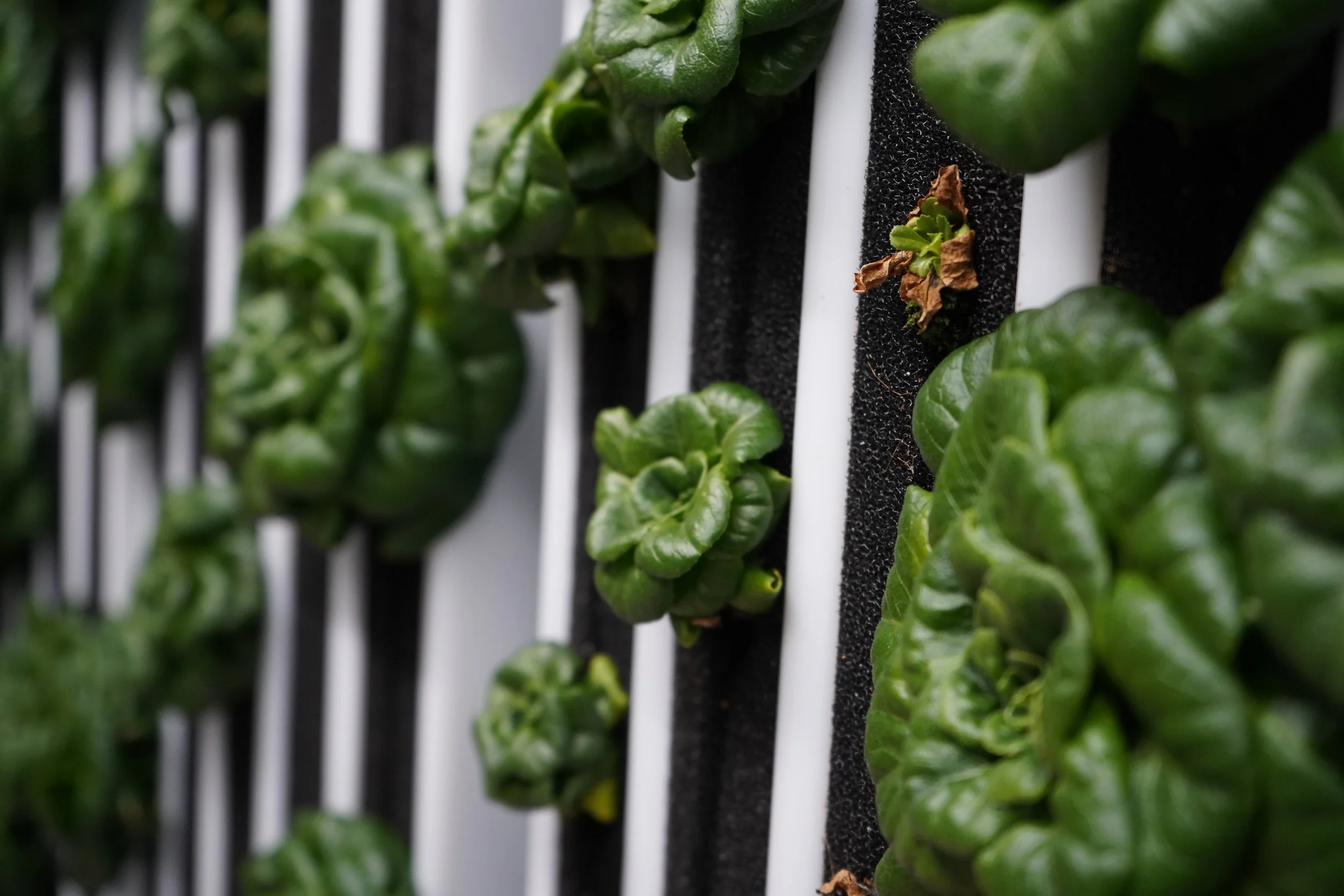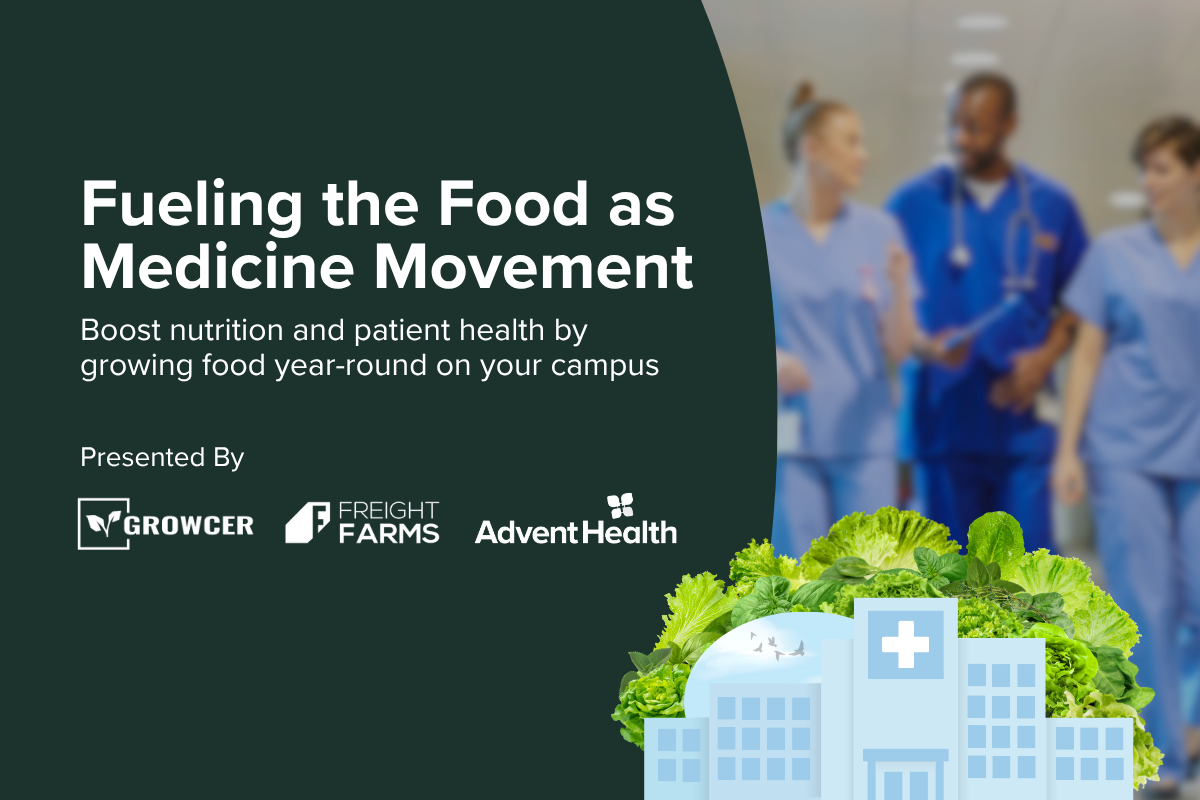The Future of Hospital Nutrition: How Container Farming Powers the Food as Medicine Revolution
Malnutrition afflicts 20–50% of hospital inpatients worldwide, which means 1 in 4 admitted patients battle longer hospital stays, higher readmission risk, and slower recovery. These alarming rates remain consistent across North America and globally, and the problem often intensifies during hospitalization. Too often, food services cannot deliver truly nutrient-rich produce—conventional supply chains and lengthy storage lead to nutrient loss before food even reaches the plate.
Vertical Farming: Delivering Clinical Nutrition, On Campus
Maximized Nutrient Density:
Conventionally sourced produce may lose 30% or more of its vitamins and minerals within days after harvest. Hospitals leveraging container farms can provide freshly harvested greens within hours, translating to higher clinical value for patients and staff. This “hours from harvest” advantage is particularly important for sensitive micronutrients like vitamin C and provitamin A, shown in both peer-reviewed review and practice.
Pesticide-Free, Safer Food Supply:
Vertically grown crops need no pesticides or herbicides and are produced in hygienic, closed environments. Peer-reviewed studies and operational audits confirm these systems dramatically reduce contamination risk, providing hospital executives with peace of mind on food safety.
Medically Tailored Meals—Validated:
Lab-validated nutrient content means dietitians can prescribe food like medicine. A wound-healing patient needs 20mg vitamin C? Freshly harvested greens deliver exact amounts—no guessing after transport degradation. This precision extends to oncology nutrition protocols and chronic care programs.
Transforming Operations, Finance, Sustainability and Community Impact
Eliminate Waste, Extend Shelf Life:
Up to 30% of purchased produce in hospitals is wasted, most discarded due to spoilage after just 2–3 days of shelf life. Container farm systems allow on-demand harvesting—raising shelf life to 2 weeks, cutting routine waste and purchasing costs.
Massive Yield, Compact Footprint:
A single 320 sq ft container farm can yield the equivalent of 2.5 acres, or 700–990 heads of lettuce per week, in only 4–5 parking spots. AdventHealth Celebration’s case: over 200% growth in salad bar revenue, 85% rise in cafeteria sales, and expansion to multiple campuses within three years—all with only one part-time staff member per farm.
Sustainability and ROI:
These closed-loop systems use 98% less water and drastically lower carbon footprints. Hospitals are able to support ambitious ESG and net zero goals while offering a visible symbol of innovation to patients and the community.
Community Engagement & Goodwill:
Beyond dramatic gains in cost-savings and operational efficiency, farms on hospital campuses create pathways for authentic community engagement. Hospital employees find therapeutic value in volunteering in the farms, local school groups participate in educational tours, and excess harvest can be donated to food banks. Especially in times when healthcare faces public scrutiny and operational pressures, such visible, community-focused initiatives help build goodwill, strengthen PR, and position the hospital as a positive force in the community—all while advancing sustainability goals.
Making the Numbers Work: Flexible Financing and Bonus Depreciation
New federal legislation offering nearly 100% bonus depreciation has made container farm investments more appealing to hospital CFOs and impact investors alike. This strategy enables hospitals to accelerate return-on-investment and improve operating margins on sustainability initiatives.
But capital expenditure isn’t the only option. Growcer and Freight Farms now offer a Farm as a Service option through the Growcer Fund, letting hospitals implement a fully managed farm starting at just $3,000 USD a month—hardware, support, and maintenance included. This removes barriers to adoption for organizations preferring operational expenses or looking for a way to pilot Food as Medicine programs risk-free.
Evidence and Impact
Peer-reviewed science shows leafy greens harvested and served within hours retain significantly more nutrients than conventionally distributed products stored for days or weeks.
Hospital case studies show reduced food waste, increased patient/employee satisfaction, proven food safety, and measurable cost savings.
Community & Staff Engagement: Farms create opportunities for community tours, staff education, and a visible commitment to innovation and sustainability.
Register for Our Executive Webinar: Bring the Science, ROI, and Patient Impact of Container Farming to Your Hospital
Fueling the Food as Medicine Movement: Boost Nutrition and Patient Health by Growing Food Year-Round on Your Campus
Date: October 28, 2025 | Time: 11am EST (30 minutes + Q&A) | Format: Live Virtual Webinar
Fueling the Food as Medicine Movement
What You’ll Learn:
The AdventHealth playbook: From one farm to three, tripling salad bar revenue and slashing food waste by 30%
The clinical “why” behind nutrient timing and loss and how to measure nutrition as an outcome
Investment, staffing, and space needs for hospitals of any size (starting at 320 sq ft)
Accessible payment and depreciation models including as-a-service options
Panelists:
Corey Ellis, CEO of Growcer & Freight Farms
Sean Toor, Operations Manager, AdventHealth Celebration
Audience:
Hospital executives, directors of nutrition, sustainability officers, finance/operations leaders, and anyone seeking ROI-positive, patient-focused healthcare innovation.
Reserve your spot now—change the way your hospital delivers Food as Medicine.
References
Malnutrition Prevalence & Outcomes:
Nutrient Loss After Harvest:
Implementation & Case Studies:
"Inside the farm growing in an AdventHealth parking lot." Becker's Hospital Review (2024).
"AdventHealth Celebration Case Study." Freight Farms (2024).
Sustainability & Technical References:



